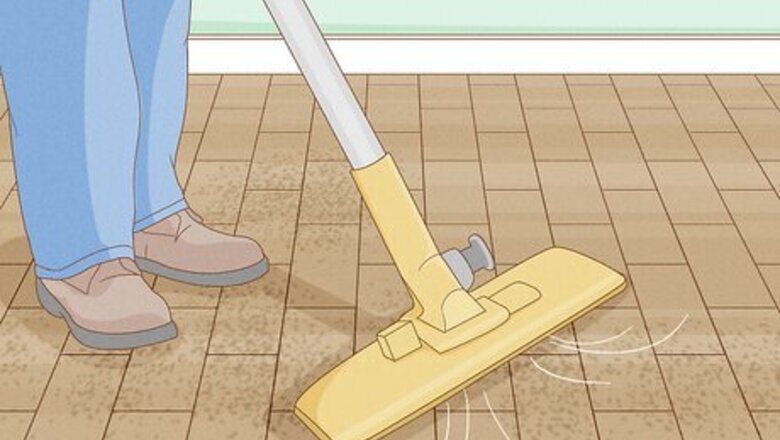
views
Cleaning Your Home
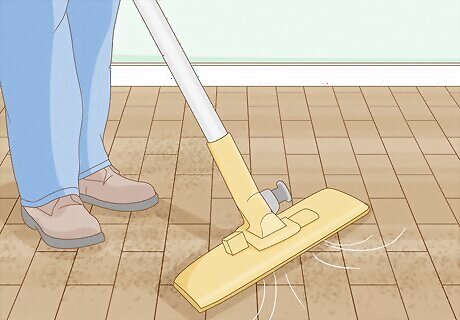
Vacuum your home. Use a powerful vacuum to clean your carpets, rugs, and furniture. Move your furniture out of the way to clean the areas under and behind it. Vacuuming removes fleas, ticks, flea eggs, and tick eggs, so it’s important not to skip this step. Vacuum the pillows and cushions on your sofa since these are generally made of foam or other materials that do not handle machine or hand-washing well. If possible, use the vacuum extension to clean the underside of your sofa and other soft furniture. Concentrate on the areas your pets frequent, such as rooms where they play and sleep. Don't forget to vacuum out your closets, too, especially if they're carpeted. If you think your car may also be infested, give it a thorough vacuuming, too, so that you don't end up carrying fleas and ticks back into the house. Empty the vacuum or throw the bag away outside to prevent the fleas or ticks from coming back.
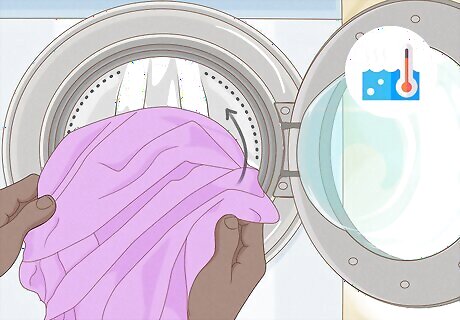
Wash your linens and clothes. Use the hot water cycle to wash your couch cushion covers, blankets, bed linens, and clothes. Use the highest dryer setting to dry them thoroughly and make sure all insects and their eggs are removed. If you have an item that could be damaged by washing it in hot water, like a wool coat, put it in a plastic bag and seal it. Plan to take it to the dry cleaner to make sure no fleas and ticks are hiding there. Wash camping tents, tarps, and other fabrics that could make a home for fleas and ticks.
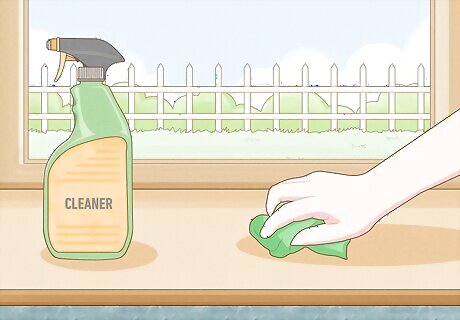
Sanitize corners and crevices. Use a spray cleaner and a rag to clean window sills, baseboards, and other areas where fleas and ticks might thrive. Focus on the rooms where your pets spend most of their time.
Treating Your Home with a Chemical Application
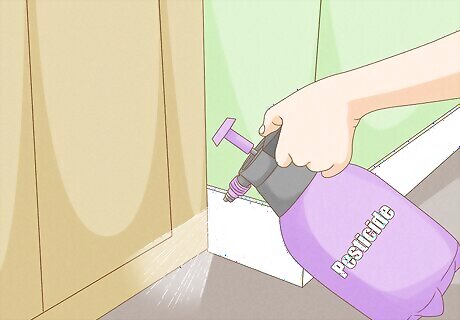
Spray your home with a pesticide. Natural treatments are not strong enough to kill fleas and ticks, so to end the infestation in your home you will have to apply a pesticide. Follow the pesticide manufacturer's instructions to treat your home, focusing on your carpets, soft furniture, and areas your pet frequents. Use a pesticide with chemicals that kill adult fleas and ticks as well as their eggs. Be sure to read the safety instructions before you treat your house. Your children and pets should not be inside your house when it is sprayed. If you have a serious infestation, you might want to hire a fumigator to treat your house for you. In this case, your entire family won't be able to go into the house for a couple of days, since the strong chemicals used are toxic.
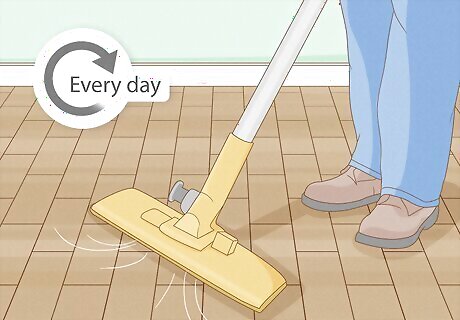
Vacuum every day. As the pesticide takes action in your home, it will kill adult fleas and ticks, and continue killing them as more hatch. It may take several weeks before the fleas and ticks are completely gone.
Treating Your Pets With a Flea and Tick Repellant
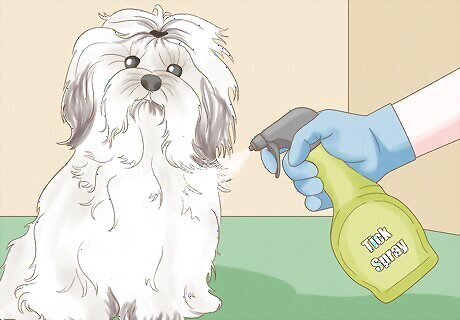
Apply a flea and tick spray or dip. Your veterinarian should be able to supply you with a safe, effective treatment for your pet. Remember to apply the treatment the same day you clean your home and treat it with a chemical solution, so your pets don't carry fleas back into the house.
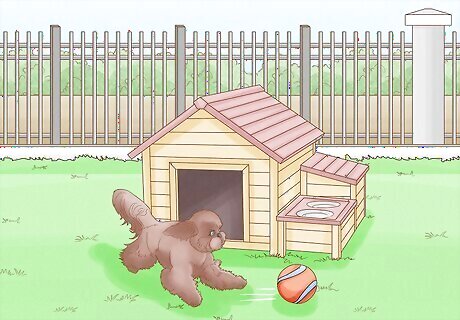
Quarantine your pets. Keep them in an area with smooth surfaces that are easy to clean, such as a tiled bathroom or kitchen, while you clean your house from top to bottom. If they have a comfortable space to play outside, that's even better. If you're concerned about your pets spending time around flea and tick repellent chemicals or outside, consider boarding them with the vet while you clean and treat your house for fleas and ticks. Make sure the fleas and ticks are completely gone, both from your pets and from your house, before you bring them back inside.
Preventing Fleas and Ticks from Coming Back

Have your pets wear flea collars. Pets are usually the reason that fleas and ticks enter homes, so the best way to keep them out is to keep them off of your pets. Ask your veterinarian for the safest flea and tick collar to use with your pets. Washing your dog with flea shampoo is another good preventative measure you can take. EXPERT TIP Ray Spragley, DVM Ray Spragley, DVM Veterinarian Dr. Ray Spragley is a Doctor of Veterinary Medicine and the Owner/Founder of Zen Dog Veterinary Care PLLC in New York. With experience in multiple institutions and private practices, Dr. Spragley’s specializations and interests include non-surgical management of cranial cruciate ligament tears, Intervertebral Disk Disease(IVDD), and pain management in osteoarthritis. Dr. Spragley holds a BS in Biology from SUNY Albany and has a Doctor of Veterinary Medicine degree (DVM) from Ross University School of Veterinary Medicine. He is also a Certified Canine Rehabilitation Therapist (CCRT) through the Canine Rehab Institute as well as a Certified Veterinary Acupuncturist (CVA) through Chi University. Ray Spragley, DVM Ray Spragley, DVM Veterinarian Check dogs for fleas. Signs that fleas may be present include scratching excessively, losing hair, or irritated skin. You can gently brush your dog's coat onto a paper towel to catch black specks, which could be flea waste. If rusty stains appear when you wet the paper towel, it likely indicates a flea infestation needing treatment.
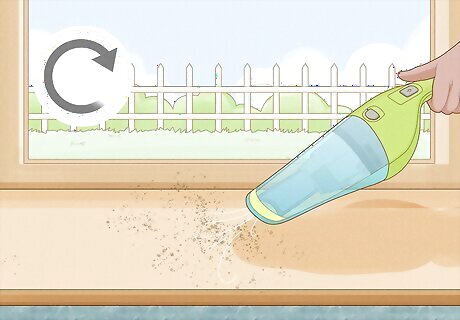
Vacuum often. In the event that another flea or tick does enter your home, vacuuming the house will ensure that it doesn't stay long enough to reproduce. Vacuum areas where your pets spend time every day and vacuum the entire house once or twice a week.
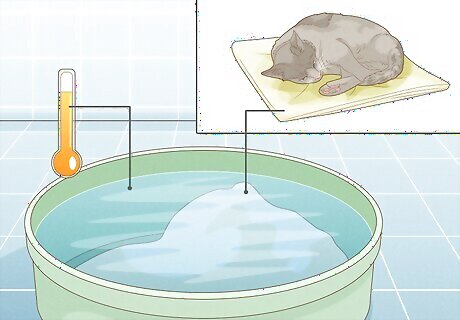
Keep your pets' bedding and linens clean. Cloth dog and cat beds should be washed frequently in hot water. If you use a towel to dry off your dog after baths, wash it in hot water right away instead of tossing it into the laundry basket.

















Comments
0 comment